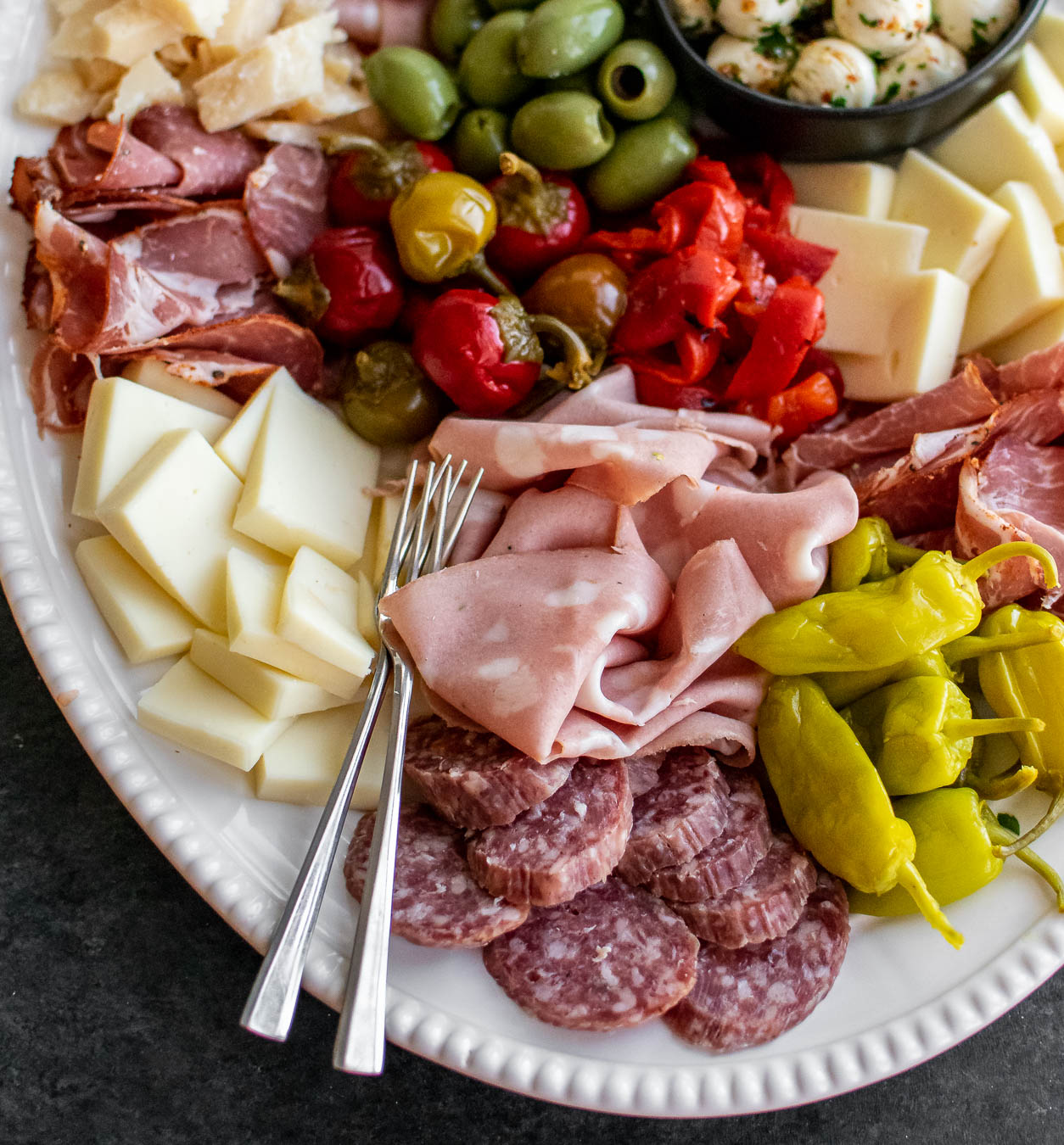Antipasto Squares: Easy Recipe for a Delicious Italian Appetizer
Antipasto squares draw their inspiration from the traditional Italian “antipasto,” meaning “before the meal.” This dish typically consists of various cured meats (like prosciutto), cheeses (like provolone), olives, roasted vegetables, and artichokes. Antipasto serves as an appetizer, whetting the appetite for the main courses. Over time, culinary innovation led to the creation of antipasto squares, packaging these flavors into a convenient, portable format. Although rooted in Italian culture, antipasto squares have gained global popularity, especially in the US, as versatile appetizers.
Key Ingredients Explained
Antipasto squares feature a mix of carefully selected ingredients to create balanced and rich flavors.
- Crescent Dough: Provides a flaky, buttery crust that encases the ingredients.
- Cured Meats: Common options include salami, pepperoni, and ham, offering savory and spicy notes.
- Cheeses: Provolone, mozzarella, and Parmesan add layers of creaminess and saltiness.
- Vegetables: Roasted red peppers, olives, and artichoke hearts deliver texture and slight tanginess.
- Seasonings: Italian herbs, garlic powder, and pepper add depth to the flavor profile.
These ingredients are layered and baked to perfection, merging the traditional antipasto platter components into a savory treat.
How to Make Antipasto Squares
Choosing the Right Ingredients
Select fresh and high-quality ingredients for the best results. Use crescent dough for the base, which brings flakiness and a buttery taste. Choose a variety of cured meats such as salami and pepperoni, ensuring they’re thinly sliced for even layering. Opt for provolone and mozzarella cheeses; their meltability enhances the texture. Incorporate vegetables like roasted red peppers and olives to add color and a nuanced taste. Season with Italian herbs like oregano and basil for an authentic flavor profile.
Step-by-Step Cooking Guide
Preparation
- Preheat your oven to 350°F (177°C) for optimal baking conditions.
- Grease a 9×13-inch (23×33 cm) baking dish to prevent sticking.
Layering
- Unroll one crescent dough sheet and place it in the greased dish, pressing to the edges.
- Layer thinly sliced cured meats evenly over the dough.
- Add layers of provolone and mozzarella cheeses on top of the meats.
- Disperse roasted red peppers and olives evenly over the cheese.
- Sprinkle Italian herbs over the vegetables for added flavor.
Finishing
- Unroll the second sheet of crescent dough and place it over the layers, pressing the edges together to seal.
- Brush the top with an egg wash for a golden, glossy finish.
- Bake the assembled dish for 30-35 minutes, or until the top is golden brown.
- Allow the baked antipasto squares to cool for about 10 minutes to set the layers.
- Cut the cooled dish into squares, making sure to slice evenly for a neat presentation.
- Serve warm or at room temperature, making them suitable for various occasions.
Variations of Antipasto Squares
Vegetarian Options
Vegetarian antipasto squares provide a tasty alternative for those avoiding meat. Swap cured meats with vegetables like roasted bell peppers, sautéed mushrooms, and artichoke hearts. Use a mix of cheeses such as feta, provolone, and mozzarella. Combine these with olives and sun-dried tomatoes for added flavor. Season with Italian herbs, and layer the ingredients between crescent dough for a delicious, meat-free version.
Experimenting with Different Meats and Cheeses
Explore a variety of flavors by using different meats and cheeses in your antipasto squares. Substitute traditional cured meats with options like capicola, prosciutto, or salami. Try cheeses like fontina, gouda, or sharp cheddar for unique tastes. Mix and match these with olives, peppers, and artichokes, adding distinct herbs and spices according to your preference. Adjust the layers as needed to retain the balance between savory fillings and the flaky crust.
Serving and Presentation Tips
Ideal Accompaniments
Complement your antipasto squares with a variety of sides that enhance the overall meal experience. Fresh salads, like an arugula and cherry tomato mix, provide a refreshing contrast to the rich flavors. Include a selection of olives, such as Kalamata and Castelvetrano, for added variety. Marinated vegetables, like artichokes and mushrooms, further elevate the antipasto experience. For a touch of sweetness, serve fresh fruit, particularly grapes and figs, alongside a selection of crusty bread or breadsticks.
Tips for Aesthetic Presentation
Ensure that your antipasto squares look as good as they taste by following a few simple presentation tips. Arrange the squares on a large platter, spacing them evenly to avoid crowding. Garnish with fresh basil leaves or sprigs of rosemary to add a pop of color. Use a clean, sharp knife to cut the squares, ensuring neat edges for a polished look. Layer the antipasto ingredients consistently so that each square reveals visible layers of meats, cheeses, and vegetables when cut. Present the platter with complementary serving tongs or forks for easy handling, enhancing both the practicality and visual appeal.
Conclusion
Antipasto squares offer a delightful fusion of flavors and textures that can elevate any gathering. Their versatility allows you to customize the ingredients to suit your taste, making them a crowd-pleaser every time. Whether you’re sticking to the classic recipe or experimenting with new variations, these squares are sure to impress. Serve them with complementary sides and a touch of creativity in presentation, and you’ll have a dish that’s both delicious and visually stunning. Enjoy the process of making and sharing these antipasto squares with your loved ones.






